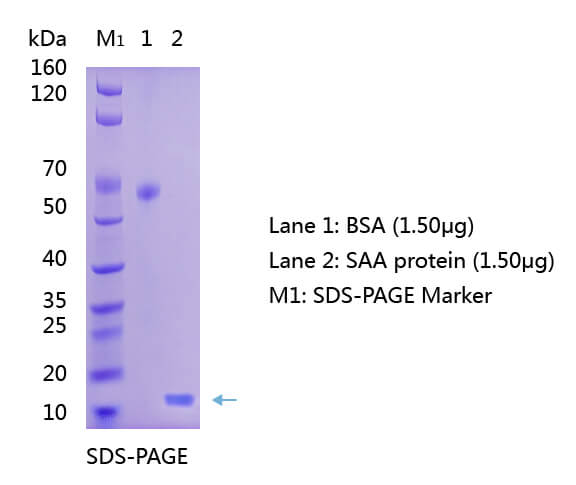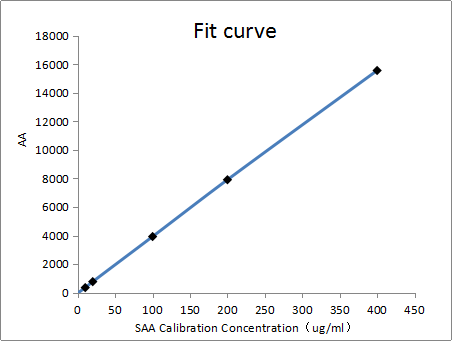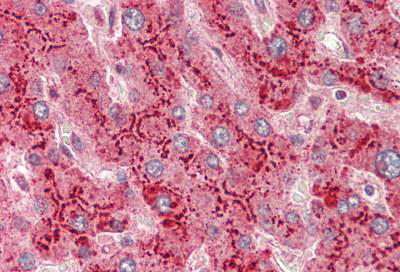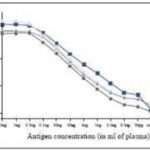Anti-Serum Amyloid A (SAA) Antibody; ChemWhat Code: 1394034
Antigen
| Name | Serum Amyloid A (SAA) |
| Synonyms | SAA; PIG4; SAA2; TP53I4 |
Description
| Name | Anti-Serum Amyloid A (SAA) Antibody |
| Synonyms | Anti-SAA1; Serum Amyloid A Antibody IHC-plus; Serum amyloid A protein; Serum Amyloid A; Serum amyloid A-1 protein; SAA; Serum amyloid A1; PIG4; Human SAA1; SAA; Serum Amyloid A |
| Host | Mouse; Goat; Rabbit |
| Reactivity | All species |
| Antibody Product Type | Primary |
| Use | Detection; Capture |
| Conjugate | Unconjugated; Biotin; APC; Alkaline Phosphatase (AP); FITC; HRP; PE |
| Specifity | Recognizes natural and recombinant human SAA. Does not show any cross-reactivity with other human cytokines or growth factors tested such as IL-1b, IL-8, MCAF, TGF-b and EGF. |
| Application | ELISA; Immunohistochemistry (IHC); Western Blotting (WB); Immunofluorescence (fixed cells) (IF/ICC); Immunoprecipitation (IP); Cell-ELISA (cELISA); Immunoassay (IA); Immunocytochemistry (ICC) |
Properties
| Form | Liquid/Lyophilized |
| Handling | The antibody solution should be gently mixed before use. |
| Storage Condition | Store at 4°C for frequent use. Stored at -20°C in a manual defrost freezer for a year without detectable loss of activity. Avoid repeated freeze-thaw cycles. |
| Clonality | Monoclonal/Polyclonal |
| Isotype | IgG |
Safety Information
| RIDADR | NONH for all modes of transport |
| Flash Point(F) | Not applicable |
| Flash Point(C) | Not applicable |
Images
Other Info
| About the antigen | Serum amyloid A proteins are a family of apolipoproteins associated with high-density lipoprotein (HDL) in plasma. Different isoforms are expressed constitutively at different levels or in response to inflammatory stimuli. The serum amyloid A family comprises a number of differentially expressed apolipoproteins, acute-phase SAA1 and SAA2, the former being the major component in plasma and constitutive SAAs. Although the liver is the primary site of synthesis of both SAA types extrahepatic production has been reported. The in vivo concentrations increase by as much as 1000 fold during inflammation. Several studies have expressed its importance in the diagnosis and monitoring of various diseases. Pathological SAA values are often detected in association with normal CRP concentrations; It rises earlier and more sharply than CRP. Recently, a broader view of SAA expression and function has been emerging. |
Related Chemicals
Buy Reagent | |
| No reagent supplier? | Send quick inquiry to ChemWhat |
| Want to be listed here as a reagent supplier? (Paid service) | Click here to contact ChemWhat |
Approved Manufacturers | |
| Want to be listed as an approved manufacturer (Requires approvement)? | Please download and fill out this form and send back to approved-manufacturers@chemwhat.com |
Contact Us for Other Help | |
| Contact us for other information or services | Click here to contact ChemWhat |





